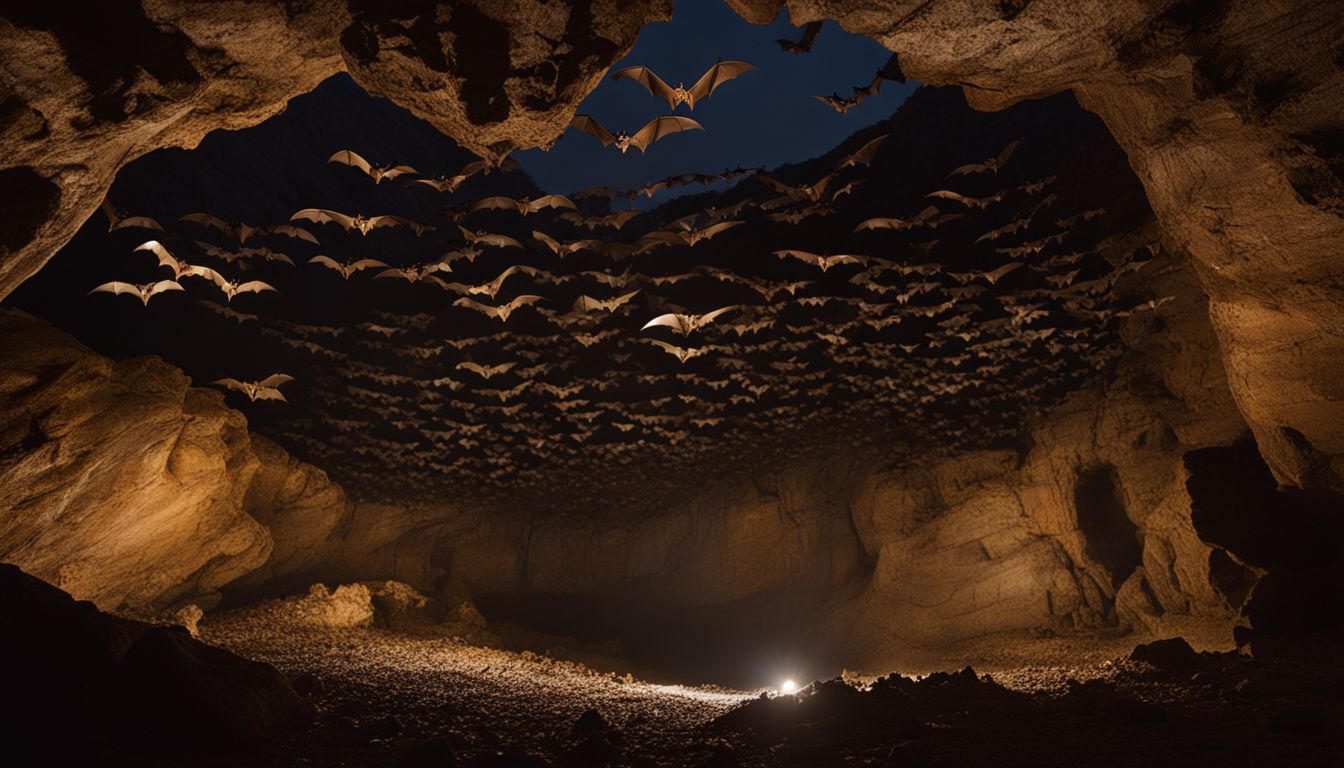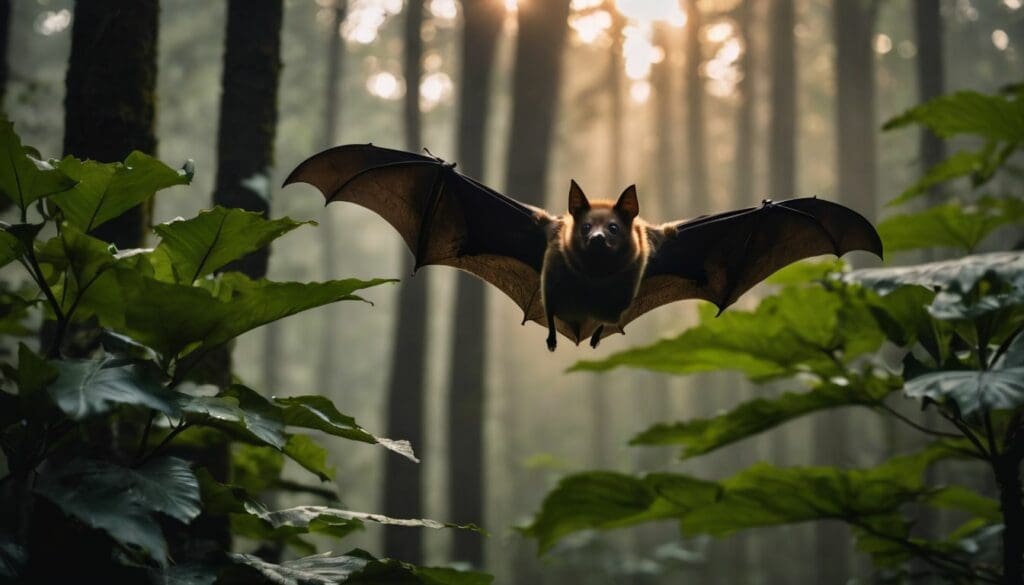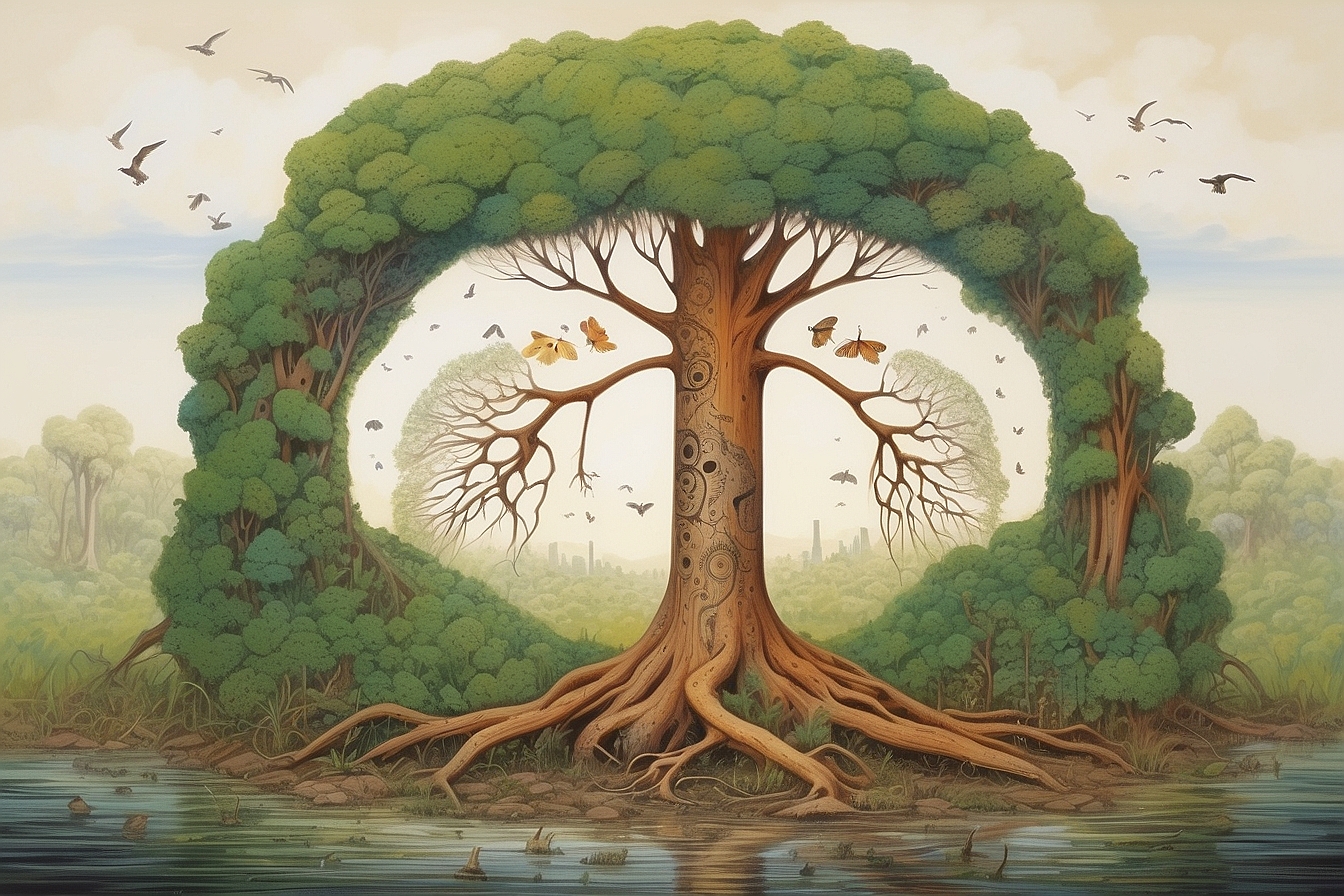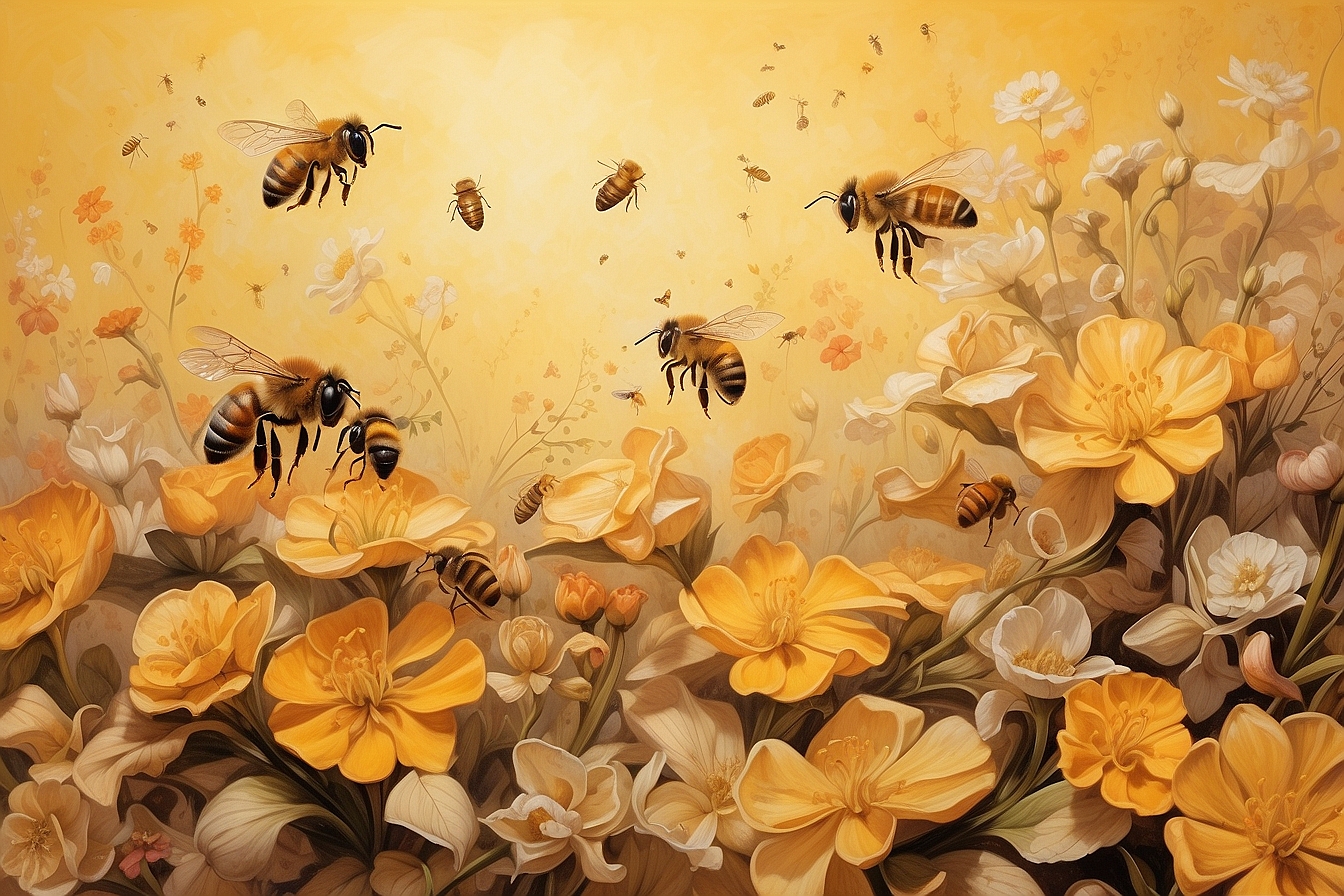Many of us share a concern for the dwindling numbers of wildlife and the subsequent impact on nature’s delicate equilibrium. This is particularly noticeable with our nocturnal friends, the bats.
These creatures are surprisingly integral as pollinators to more than 500 species of plants, quite unbeknown to many. Our forthcoming article will shed light on their oft-overlooked significance and argues passionately for why maintaining robust bat populations is indispensable for flourishing ecosystems.
Join us as we unveil these unsung heroes of the night whose tireless efforts keep our natural world abuzz with life!
Key Takeaways
- Bats are vital for pollinating over 500 species of plants, including those that produce fruits like bananas and mangoes.
- Their role as natural pest controllers saves agricultural industries billions each year by eating harmful insects and reducing the need for pesticides.
- Bats help ecosystems by dispersing seeds which aids forest regeneration and maintains biodiversity in various habitats.
- The guano produced by bats is an excellent natural fertiliser, enriching soils and promoting plant growth.
- Protecting bat populations is crucial for maintaining the balance of nature; their extinction would disrupt ecosystem dynamics and have negative impacts on human life.
Understanding Bats and Their Habitat

In exploring the world of bats, we uncover an array of habitats ranging from the lush tropics to our very own backyards. These enigmatic creatures have carved out niches in varied environments, relying on specific conditions for their daytime retreats and nocturnal activities.
Daytime retreats for bats
Bats seek shelter during the day after their nocturnal activities. We find them curled up in caves, hollow trees, and even under bridges or inside buildings. These daytime retreats provide safety from predators such as owls and racoons.
They also offer a stable environment where temperature and humidity levels are just right for bats to rest and conserve energy.
Securing these habitats is essential for bat conservation. As we tackle habitat loss through deforestation and urbanisation, we must protect existing roosts and create new ones where necessary.
This ensures that our flying friends continue to thrive and offer ecosystem services like insect control and seed dispersal that benefit us all.
Bats in tropical regions
In tropical regions, a dazzling array of bat species play crucial roles in maintaining healthy ecosystems. Flying foxes with their impressive wingspans soar through the night sky, feasting on fruit, and in doing so, they disperse seeds that regenerate forests and maintain biological diversity.
Fruit-eating bats are particularly important for plants such as bananas and mangos which rely on these nocturnal creatures to pollinate their flowers. Without these winged mammals working under the cover of darkness, many tropical plants might fail to reproduce.
Our efforts in conservation need to focus on protecting these vital animals from habitat destruction and white-nose syndrome, diseases that can decimate bat populations. With every swoop and dive, frugivorous bats shape the very fabric of the tropics by dispersing pollen and seeds over great distances, ensuring continued growth and survival of plant life.
Let’s turn our attention now to how exactly bats contribute beyond just pollination within their habitats.
Ecological Importance of Bats

In our ecosystems, bats play a critical role that often goes underappreciated. These creatures are pivotal in maintaining the balance of nature, serving essential functions from controlling pests to enabling plant reproduction.
Role as prey and predator
We often overlook the critical balance bats maintain in their ecosystems, thriving as both prey and predator. Their nightly hunts control insect populations, including pests that damage crops and transmit diseases to humans and livestock.
As predators, they serve a natural pest control service not just for agriculture but for maintaining the balance of insects in various habitats.
However, these incredible creatures don’t just hunt; they’re also on the menu for other animals. Owls, hawks, and even some larger species of bats see them as food. This positions them uniquely within the food web – vital for pest regulation while simultaneously supporting the diets of other wildlife species.
Their role is irreplaceable and losing them would disturb our delicately balanced ecosystems drastically.
Seed dispersal and pollination
- Bats act as vital agents for pollination, especially in tropical regions. Many plants depend on them to transfer pollen from one flower to another. This helps maintain genetic diversity within plant populations.
- As bats feed on nectar, they inadvertently pick up pollen on their fur and bat wings. They then transport this pollen over long distances, far surpassing what insects or birds can achieve.
- The survival of certain species, like the agave plant and some cacti, hinges on bat pollination. These plants have evolved to flower at night, specifically targeting bats as their primary pollinators.
- Through pollination by bats, many fruits that humans consume get produced—including bananas, mangoes, and guavas—making bats indispensable to both wild habitats and agricultural interests.
- Besides pollinating flowers, bats are essential for spreading seeds across vast areas. This occurs when they consume fruits and excrete the seeds in different locations—a process known as endozoochory.
- Seed dispersal is pivotal for forest regeneration and succession. It helps various plant species colonise new areas, particularly those that are recovering from disturbances or human-caused environmental degradation.
- By scattering seeds into nutrient – rich environments often found in bird droppings or decaying wood, bats enhance the chances of saplings growing into mature plants.
- This seed – spreading activity leads to the formation of new plants that become food sources for herbivores like sheep or shelter for animals such as frogs.
Material and nutrient distribution
We play a crucial role in the dispersal of nutrients across different habitats. Our nocturnal activities take us between various ecosystems, and as we feed on fruits like durians and mahwa tree products, we spread seeds far from their parent plants.
These seeds often come with their own package of nutrients, which fertilises the soil in new locations.
Our guano serves as an excellent fertiliser too. It enriches cave environments and directly benefits plant life by providing essential growth compounds like nitrogen and phosphorus.
This natural process supports forest regeneration, helping to maintain healthy ecosystems where pioneer plants can thrive. Moving forward, let’s explore how essential our presence is to the unique landscapes of caves.
Importance to cave ecosystems
As bats spread nutrients through their guano, they play a vital role in maintaining cave ecosystems. These environments rely on the steady input of organic matter from bat droppings which support entire communities of unique organisms.
From microscopic bacteria to larger creatures like beetles and crickets, these species flourish in caves due to bats’ activities.
Our furry friends act as key bioindicators for the health of these underground habitats. When bat populations are thriving, it often signals a well-balanced ecosystem where pollutant levels are low and food chains remain intact.
Bats’ presence helps us gauge environmental quality, indicating when we need to step up our conservation efforts.
Economic Importance of Bats
Bats play a crucial role in keeping our agricultural pests at bay, saving economies billions every year – stay with us to uncover how these nocturnal creatures are silent benefactors to our wallets.
Arthropod suppression
We play a crucial role in managing pest populations through our appreciation and conservation of bats. These nocturnal creatures feast on countless arthropods every night, including mosquitos, beetles, and moths.
Our efforts to preserve their habitats directly support this natural form of pest control. Imagine the agricultural benefits – crops remain healthier as bats reduce the need for harmful pesticides that can contaminate water quality.
Understanding this connection encourages us to take action against habitat degradation and other threats to bat populations. By protecting them, we safeguard our food supply chain and contribute significantly to maintaining ecological balance.
As stewards of the environment, it’s vital we continue promoting bat-friendly practices in farming communities worldwide.
Next up is their contribution to agriculture which undeniably solidifies their value in our ecosystems even further.
Contribution to agriculture
- Each night, bats feast on large quantities of harmful insects.
- This nocturnal activity limits the need for chemical pesticides in crop fields.
- Mexican free – tailed bats specialise in eating corn earworm moths that damage a wide array of crops.
- Their predation helps to maintain a balance in insect populations, supporting crop health.
- In areas where fruit bats are common, they pollinate plants and disperse seeds as they forage for food.
- Pollinated flowers can bear fruit due to the essential work of these flying mammals.
- Bats contribute significantly to the life cycle of many angiosperms – flowering plants that provide us with fruits and vegetables.
- The fertilisers industry benefits from guano produced by bats which serves as an excellent natural fertiliser.
- Seed dispersal across ecosystems leads to more robust plant genetics and varied crops.
- Their activities ensure sustainable farming practices by reducing dependency on artificial methods of pest control and fertilisation.
Bats and Their Role in Plant Life
Bats are unsung heroes in plant life, vital for pollinating countless tropical plants and dispersing seeds that help forests thrive; join us to uncover their hidden world and the far-reaching benefits they bestow upon our ecosystem.
Pollination of tropical plants
We play a crucial role in the pollination of tropical plants through our conservation efforts for bats. These flying mammals are key pollinators, especially for night-blooming flowers that rely on them to spread pollen.
Their nocturnal activities complement those of daytime pollinators such as bees and butterflies, ensuring a continuous cycle of reproduction among these vital species.
Our protection of bat habitats secures the survival of many tropical plants that depend on them. As they feed on the nectar within flowers, they transfer pollen stuck to their bodies from plant to plant.
This mutualistic relationship not only sustains ecosystems but also supports agriculture by helping in the production of fruits like bananas and mangoes which we enjoy immensely. Let’s shift focus now to how bats aid in dispersing seeds across various environments.
Seed dispersal across ecosystems
Bats are unsung heroes in maintaining the health of our ecosystems, particularly through seed dispersal. By consuming fruit from various plants and later excreting the seeds far from their original location, they foster biodiversity and help forests regenerate.
This natural process is vital for spreading plant species, especially in tropical regions where bats are abundant.
Our nightly flights assist in transporting seeds across different habitats, creating a rich tapestry of life that supports numerous other species. The absence of these winged gardeners could lead to less varied landscapes and decreased resilience against environmental changes.
Moreover, by moving material between ecosystems, we play an integral role in nutrient distribution—a key factor for thriving plant communities.
The Impact of Bat Extinction
The loss of bats would ripple through ecosystems, disrupting the balance and bringing unforeseen changes that could profoundly affect our own way of life—join us in exploring this further.
Effects on global ecosystems
Bats play crucial roles that extend far beyond their roosts and night skies. They act as indicator species, signaling the health of our global ecosystems. Their decline can trigger a domino effect, disrupting ecological balances from seed dispersal patterns to insect population control.
Without bats, certain plants may struggle to reproduce due to lack of pollination and lost seed distribution services.
We must also consider how declining bat populations alter nutrient cycles. These mammals move vast amounts of material across landscapes – enriching soils where they roost and feeding in different areas.
Their absence would profoundly affect plant growth and the animals relying on those plants for survival, including us humans who benefit indirectly from these complex food webs sustained by bat activity.
Protecting bats isn’t just about saving individual species; it’s about preserving the intricate web of life that supports all creatures on Earth.
Potential impacts on human life
As the balance of global ecosystems teeters, the potential impacts on our lives become increasingly evident. Losing bats would intensify agricultural pests and zoonotic pathogens, which could lead to more crop damage and higher risk of disease outbreaks.
This loss would strain our food systems and health infrastructures.
We rely on the biology of bats for natural pest control – a single brown bat can eat thousands of insects each night. With fewer bats, we’d face a surge in arthropods such as mosquitoes carrying diseases like malaria or dengue fever.
This might push us towards using more pesticides that harm other species and degrade soil quality. The delicate dance of coevolution between plants and their pollinators would falter without these nocturnal allies, affecting everything from fruit availability to coffee production – staples in our daily lives.
Conclusion
We’ve discovered the remarkable roles that bats play within ecosystems. They control pests, pollinate plants and spread seeds, fostering growth and diversity. Without them, we’d face more insects, fewer fruits, and compromised natural spaces.
Let’s commit to protecting these crucial creatures for a healthier planet. The future of our environment depends on the survival of bats.
FAQs
1. Why are bats important in ecosystems?
Bats play a crucial role in ecosystems by eating insects, pollinating plants, and dispersing seeds which help maintain healthy environments.
2. What do Brazilian free-tailed bats contribute to the ecosystem?
Brazilian free-tailed bats help control pest populations as they can eat large numbers of insects each night.
3. Can bats spread diseases?
While some species like vampire bats can be disease reservoirs, it’s rare for diseases such as histoplasmosis to transmit from bats to humans.
4. How does bat echolocation work?
Bat echolocation involves emitting sounds that bounce off objects and return to the bat, helping them navigate and find prey outside the range of human hearing.
5. Are wind turbines harmful to bats?
Wind turbines can cause habitat fragmentation and may harm flying creatures like birds and bats, including species such as the Indiana bat.
6. What efforts are there to protect bats?
Organisations like The Bat Conservation Trust work actively to safeguard different families of bats through research, conservation projects, and public awareness initiatives.





